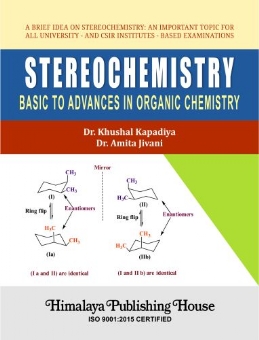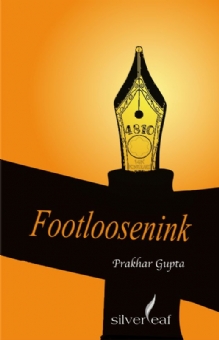The collection of chapters in this first volume of Stereochemistry – Basic to Advances in Organic Chemistry covers a range of topics that reflects both the evolution of the field of stereochemistry and the most exciting advances that presage its future. Thus, it was expressly by design that there be conceptually focused chapters on the basic principles of molecular chirality and asymmetric amplification to perfectly predict the structure of organic molecules.
The goal, as in the first edition, is to give equal weight to the fundamental aspects of the study of stereochemistry. The history of organic chemistry goes back to the days of Friedrich Wohler, two centuries ago. The stereochemical underpinnings of organic chemistry were set by Louis Pasteur, and the concept of chirality was advanced by Lord Kelvin, nearly a century later. The first stereochemical notation – that of the asymmetric carbon atom – had to await the Cahn-Ingold-Prelog (CIP) R/S rules – a half-century later; it took yet another quartercentury for the E/Z configurational notation for double bonds to be formulated. Indeed, the development of organic stereochemical language has lagged and continues to lag experimental organic chemistry. In the last quarter-century or so, there have been only two seminal contributions – both by Kurt Mislow and his coworkers – ones that have clarified the basic concepts of stereotopicity and chirotopicity. Since last two decades, scientists are working very hard to establish the unknown organic structure through the correlation of stereochemical aspects and predicting its potency and efficiency based on these parameters. Also, the national universities and central examinations organizations focused more to incorporate the stereochemistry in basics to the complex molecular framework.
The past years have witnessed a rapid development of biochemistry and molecular biology. The chemical structures of many complex biopolymers such as proteins and nucleic acids have been elucidated. Moreover, the understanding of the stereochemical details of many important transformations catalyzed by various metal and non-metal reactions reflect the structural complexity of organic, inorganic and biomolecular chemistry.
This book provides an insightful analysis of the foundations of molecular chirality, topological chirality, definitions of chirality measures, rules applying during nomenclature, set of rules for predicting the stereochemistry, dynamic stereochemical concepts, and most important, practice with suitable examples for the readers. Nevertheless, students will often wish to pursue individual topics further. This part of the work is an attempt to present the elements of a simple, uniform and comprehensive language of organic stereochemistry. An effort has therefore been made to guide the reader to give a piece of small information that is quite useful to understand the concepts. Furthermore, in a graduate course, students should be encouraged to consult primary sources. Authors are hoping that this book will not only be of interest to specialists but will also provide general information useful to organic chemists, biochemists and molecular biologists for their research and reference work during international publications.
Contents –
1. Isomers
2. Various Types of Projection in Stereochemistry
3. Conformation of Acyclic System
4. D & L Nomenclature
5. Absolute Configuration
6. Threo and Erythro Nomenclature
7. Conformational Analysis of Cyclohexane
8. Conformational Analysis of Mono Substituted Cyclohexane
9. Flipping in Cyclohexane
10. Some Basic Terms Used in Stereochemistry
11. Residual Stereoisomers
12. Meso Compounds
13. Plane of Symmetry (σ) Chirality
14. Racemic Modification
15. Racemic Compound or Racemate
16. Racemization
17. Resolution of Racemic Mixture
18. Threo and Erythro Nomenclature
19. Dynamic Stereochemistry
20. Product Stereoselectivity
21. Prochirality/Prostereoisomerism
22. Nomenclature of Prochiral Faces/Groups/Ligands
23. Diastereomers of Acyclic Molecules/Stereoselectivity of Carbonyl Compounds/Cram’s Rule and their Newman Projection and Fisher Projection
24. Application of Cram’s Rule
25. Felkin-Anh Model or Karabatsos Model
26. Diastereoseletivity in Aldol Condensation Reaction
27. Stereochemical Aspects of Aldol Condensation with Respect to Re and Si Face
28. Stability of Exo and Endo Stereoisomer
29. Conformation of Tetrahydropyran Aromatic Effect
30. Exo Anomeric Effect
31. Conformations of Fused Bicyclic
32. Concept of I-Strain
33. Dihedral Angle
34. Torsional Angle
35. Angle and Pitzer Strain
36. Conformation of Cyclopropane and Cyclobutane
37. Conformation of Substituted Cyclohexanes
38. Freezing of Conformational Inversions in Cyclohexane Chair Form
39. Conformation of Decalines
40. Conformation of Decalones
41. Confirmation of Bridged System
42. Stereoselective Reactions of Acyclic Alkenes
43. Addition of Carbenes to Alkenes
44. Hydrogen Addition-Selectivity
45. Oxidation of Alkenes: Epoxidation and Hydroxylation
46. Chirality and Drug Development
47. R-S Examples for Practice
48. Some Examples of Chiral Drugs
49. Some Questions for Competitive Exam
50. Bibliography







